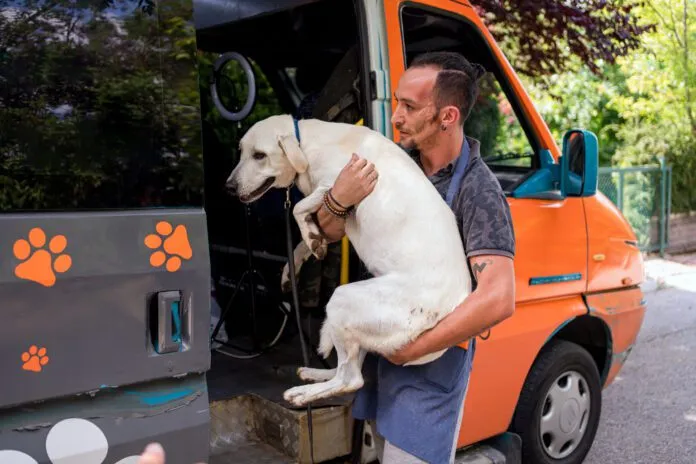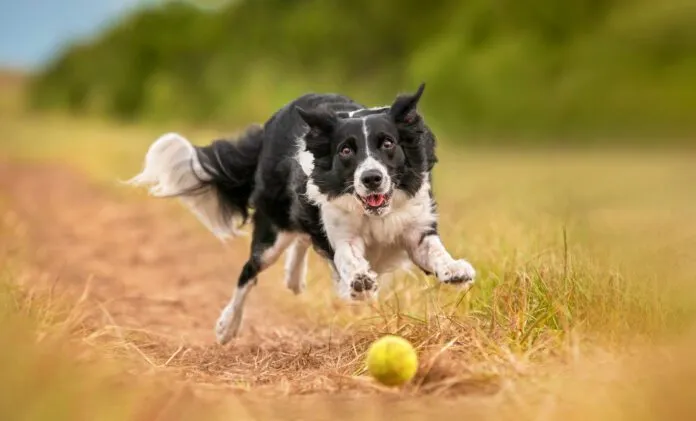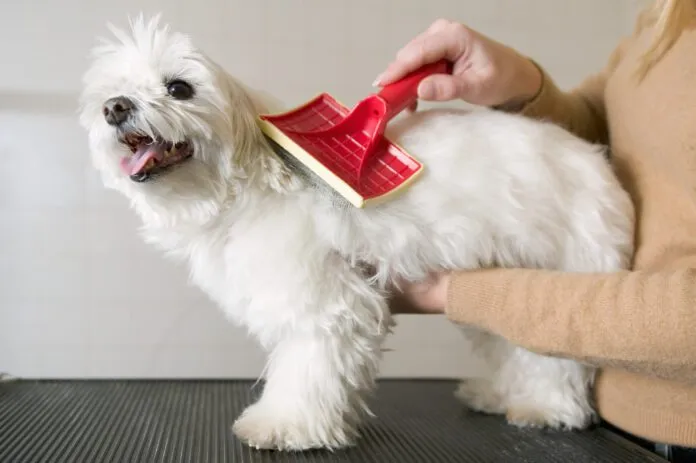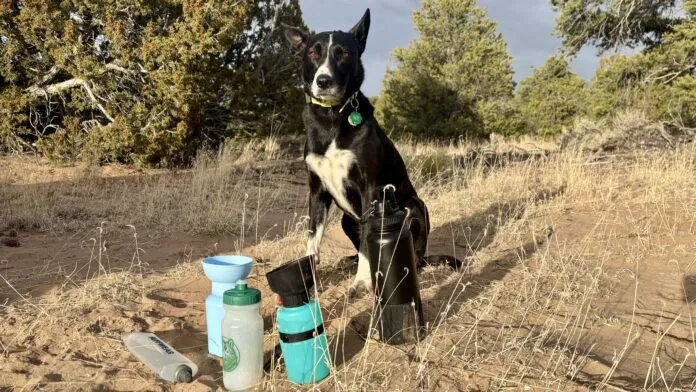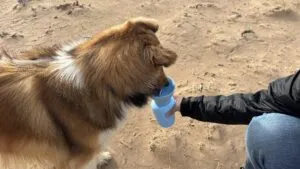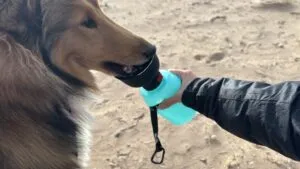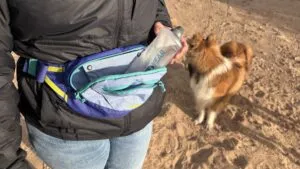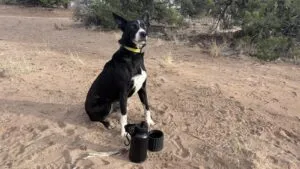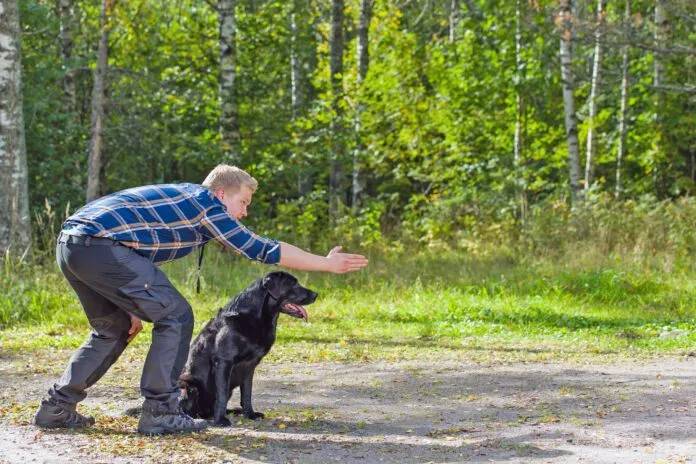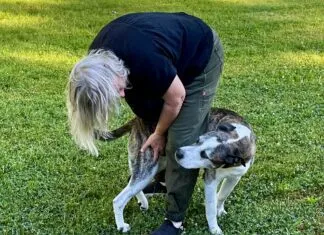You can find them from Portland to Poughkeepsie, from Boston to Blackwater…in fact, you’ll find them almost every state in the nation. Despite their sweet-sounding name, they’re one of the most noxious and detested plants in North America: the foxtail. They can also be deadly to your dog.
First, let’s get some nomenclature out of the way. Foxtails are a weedy grass in the grass family of Poaceae, which includes everything from wild rice to bluegrass to sugarcane. Except for knotroot foxtail—the oldest cultivated cereal in the Americas that dates to almost 9000 BCE—none of the foxtail grasses are native to North America. They likely originated in Africa and entered North America with the prehistoric migrations of the ancestors of Native Americans across the Bering Straits land bridge.
What is a Foxtail?
Foxtails are clusters of tall, slender weeds with long, drooping leaf blades; their stems are topped by bristly, spike-like panicles that have a soft, bushy appearance that vaguely resemble a fox’s tail—hence, the name “foxtail.” Plants germinate in the spring, with flowering beginning in mid-summer as days begin to shorten. The first seeds mature about two weeks after the panicle flowers; then, as the plant begins to dry out in the summer months, the seed heads become brittle and fall off.
What Makes Foxtails So Dangerous to Dogs?
While cases of foxtail infiltration occur throughout the year in warm climates, these weeds are especially dangerous during summer and early fall, when they have dried out and hardened. All foxtail spikes (awns) have a hardened tip and retrose (backward-pointing) barbs which disconnect easily and cling to animal fur—or in the case of humans, to socks, mesh-topped shoes, and any clothing with loose weaves or textures. In animals, the barbs, which point in only one direction, cling to the fur, and with every movement, burrow deeper into the coat. For wild mammals, their fur is usually short enough that the foxtail awns will eventually fall out before doing damage.
The same cannot be said of our dogs.
Foxtail awns easily penetrate soft tissue, traveling throughout the body for days or even months before clinical signs appear. Often, an abscess will emerge where the awn has settled, necessitating surgical removal. Dogs often pick up foxtails between their toes, where the foot’s movement allows the awn to burrow ever more deeply until it punctures the skin. It’s also extremely common for dogs to get foxtail awns in their nostrils, where they can aspirate them.
Inhaled foxtails can cause lung infections and pneumonia, pyothorax (infected chest cavity), or pneumothorax (punctured lung), and can travel into the brain and cause seizures or death; foxtails in the ears can rupture eardrums or cause chronic ear infections; foxtails in the eye can lead to conjunctivitis or even blindness; and when they migrate, foxtails can cause infection of the spinal vertebra and intervertebral disc, or penetrate the body through the chest or abdominal wall. If ingested, the awns can embed themselves in the dog’s gums, tonsils, esophagus, or stomach; this can lead to excessive drooling, inability to eat, and in worst-case scenarios, perforation of the gastrointestinal tract and peritonitis, a serious and often fatal condition in dogs.
Long-haired dogs are especially vulnerable to foxtails, as the awns have more hair to secure themselves onto. Hunting dogs are also susceptible to picking up foxtails because they spend so much time in tall grasses. Although there are no definitive studies on dog deaths caused by foxtails, one veterinarian says she sees one to two foxtail deaths per year among her canine patients.
What Are the Signs of an Embedded Foxtail?
Much depends upon where the foxtail is lodged. Some of the most common signs of a new foxtail incident are head shaking, limping, constant licking of one spot on the body, pawing at the face, and snorting or sneezing. Some indicators can show up days or weeks later; these include unusual lumps or bumps, red or tender areas, inflammation, decreased appetite, and lethargy. If the awn has traveled to a vital organ such as the lung or heart it can cause symptoms specific to that organ.
Where do Foxtails Grow?
The U.S. is home to three species of foxtails: yellow foxtail, green foxtail, and giant foxtail. All are known by other common names, including yellow or green bristlegrass, bristly or golden foxtail, wild or foxtail millet, pigeongrass, and nodding foxtail. Yellow and green foxtails range in size from one to two feet, but the giant foxtail can grow up to four feet tall.
Foxtails grow in almost any type of soil and environmental condition, including pastures, lawns, gardens, roadsides, and ditches. The Weed Science Society of America ranks foxtail as one of the most common weeds in the nation. It doesn’t grow in some lucky parts of the country—namely Florida, Georgia, Hawaii, Louisiana, North Carolina, South Carolina, and Virginia—but can be found in the rest of the U.S.
When is Foxtail Season?
There isn’t really a “foxtail season,” since every part of the country is a little different: for instance, in the cool, wet northwest, the season begins in June and lasts until August. In warmer, drier parts of the U.S., it can begin as early April and extend through September.
How Can Dogs be Kept Safe from Foxtails?
If you have property where foxtails are abundant, the best thing you can do is pull them out in the spring or mow them down later. Avoid taking your dog to areas with foxtails or tall grasses; if you do walk through fields or along roadsides where foxtails could be growing, check your dog afterward for visible awns, especially between their toes, in their ears, on their face, and in their armpits and groin areas. Keep the fur on your dog’s feet trimmed as short as possible.
Some veterinarians suggest that dogs who roam in foxtail-prone regions should wear a special lightweight, mesh hood that covers their heads and faces.
Other Barbed Grasses
You may live in a region of the country where foxtails are rare but that doesn’t mean you can relax. There are a number of other grasses that pose dangers to your dog.
Cheatgrass (AKA Downy Brome). Cheatgrass is an invasive annual grass that’s now found in at least 49 states and has adapted to thrive in areas with wet winters and hot, dry summers. Like foxtails, cheatgrass has awns that can easily burrow into your dog, causing the same problems that foxtail does. Native to Europe and eastern Asia, it found its way to America through European settlers in the 1800s.
Needlegrasses. North American is home to various species of needlegrass, with much of it found in western regions. During spring, livestock feed on needlegrasses, but once they dry out they have seed heads with sharp, barbed awns that can detach from the plant and easily penetrate skin and other tissues.
Spear grass. Spear grass is native to the tropics and subtropics of Africa, Southern Asia, Northern Australia and Oceania and is naturalized in tropical and subtropical areas of the U.S. Like other barbed grasses, when dry its head contains sharp awns that can burrow into dogs’ skin and orifices.
Wild barley, foxtail barley, skunk-tall grass, flicker-tail grass, tickle grass. These are all common names for a type of perennial short-lived cool season bunchgrass native to almost all of the U.S. except for the Southeast. Often found in pastures, roadsides, meadows, alkaline/saline areas, moist soils and disturbed areas, it features the same spiky awns found on other barbed grasses.
Bromegrass. Native to western North America from Alaska to northern Mexico, there are over 40 species of bromegrass in the U.S., many of which are also dangerous to dogs because of their sharp awns that develop in summer.






